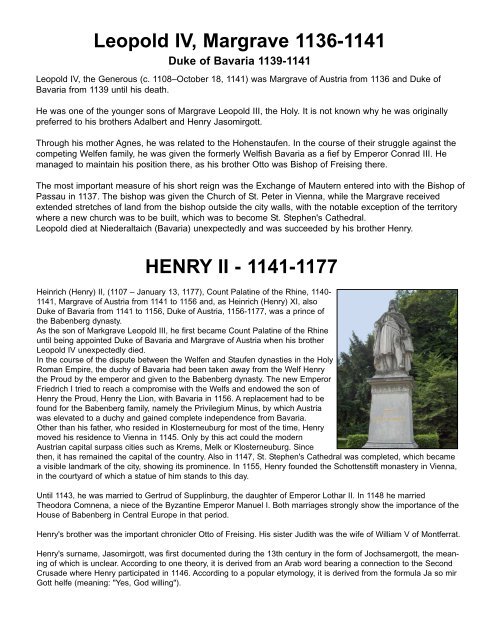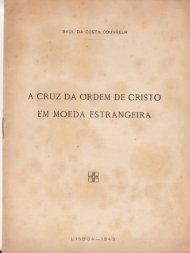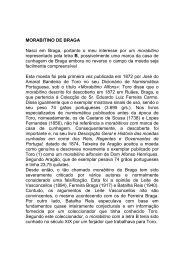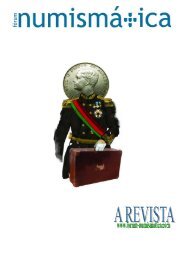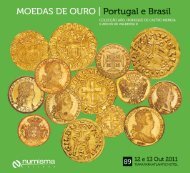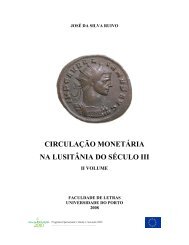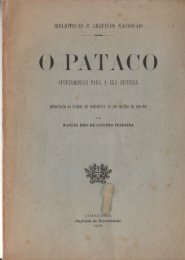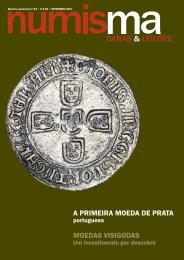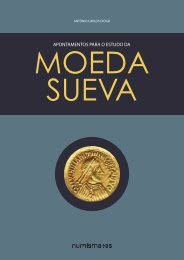Silver Pfennigs and Small Silver Coins of Europe in the Middle Ages
Silver Pfennigs and Small Silver Coins of Europe in the Middle Ages
Silver Pfennigs and Small Silver Coins of Europe in the Middle Ages
You also want an ePaper? Increase the reach of your titles
YUMPU automatically turns print PDFs into web optimized ePapers that Google loves.
Leopold IV, Margrave 1136-1141<br />
Duke <strong>of</strong> Bavaria 1139-1141<br />
Leopold IV, <strong>the</strong> Generous (c. 1108–October 18, 1141) was Margrave <strong>of</strong> Austria from 1136 <strong>and</strong> Duke <strong>of</strong><br />
Bavaria from 1139 until his death.<br />
He was one <strong>of</strong> <strong>the</strong> younger sons <strong>of</strong> Margrave Leopold III, <strong>the</strong> Holy. It is not known why he was orig<strong>in</strong>ally<br />
preferred to his bro<strong>the</strong>rs Adalbert <strong>and</strong> Henry Jasomirgott.<br />
Through his mo<strong>the</strong>r Agnes, he was related to <strong>the</strong> Hohenstaufen. In <strong>the</strong> course <strong>of</strong> <strong>the</strong>ir struggle aga<strong>in</strong>st <strong>the</strong><br />
compet<strong>in</strong>g Welfen family, he was given <strong>the</strong> formerly Welfish Bavaria as a fief by Emperor Conrad III. He<br />
managed to ma<strong>in</strong>ta<strong>in</strong> his position <strong>the</strong>re, as his bro<strong>the</strong>r Otto was Bishop <strong>of</strong> Freis<strong>in</strong>g <strong>the</strong>re.<br />
The most important measure <strong>of</strong> his short reign was <strong>the</strong> Exchange <strong>of</strong> Mautern entered <strong>in</strong>to with <strong>the</strong> Bishop <strong>of</strong><br />
Passau <strong>in</strong> 1137. The bishop was given <strong>the</strong> Church <strong>of</strong> St. Peter <strong>in</strong> Vienna, while <strong>the</strong> Margrave received<br />
extended stretches <strong>of</strong> l<strong>and</strong> from <strong>the</strong> bishop outside <strong>the</strong> city walls, with <strong>the</strong> notable exception <strong>of</strong> <strong>the</strong> territory<br />
where a new church was to be built, which was to become St. Stephen's Ca<strong>the</strong>dral.<br />
Leopold died at Niederaltaich (Bavaria) unexpectedly <strong>and</strong> was succeeded by his bro<strong>the</strong>r Henry.<br />
HENRY II - 1141-1177<br />
He<strong>in</strong>rich (Henry) II, (1107 – January 13, 1177), Count Palat<strong>in</strong>e <strong>of</strong> <strong>the</strong> Rh<strong>in</strong>e, 1140-<br />
1141, Margrave <strong>of</strong> Austria from 1141 to 1156 <strong>and</strong>, as He<strong>in</strong>rich (Henry) XI, also<br />
Duke <strong>of</strong> Bavaria from 1141 to 1156, Duke <strong>of</strong> Austria, 1156-1177, was a pr<strong>in</strong>ce <strong>of</strong><br />
<strong>the</strong> Babenberg dynasty.<br />
As <strong>the</strong> son <strong>of</strong> Markgrave Leopold III, he first became Count Palat<strong>in</strong>e <strong>of</strong> <strong>the</strong> Rh<strong>in</strong>e<br />
until be<strong>in</strong>g appo<strong>in</strong>ted Duke <strong>of</strong> Bavaria <strong>and</strong> Margrave <strong>of</strong> Austria when his bro<strong>the</strong>r<br />
Leopold IV unexpectedly died.<br />
In <strong>the</strong> course <strong>of</strong> <strong>the</strong> dispute between <strong>the</strong> Welfen <strong>and</strong> Staufen dynasties <strong>in</strong> <strong>the</strong> Holy<br />
Roman Empire, <strong>the</strong> duchy <strong>of</strong> Bavaria had been taken away from <strong>the</strong> Welf Henry<br />
<strong>the</strong> Proud by <strong>the</strong> emperor <strong>and</strong> given to <strong>the</strong> Babenberg dynasty. The new Emperor<br />
Friedrich I tried to reach a compromise with <strong>the</strong> Welfs <strong>and</strong> endowed <strong>the</strong> son <strong>of</strong><br />
Henry <strong>the</strong> Proud, Henry <strong>the</strong> Lion, with Bavaria <strong>in</strong> 1156. A replacement had to be<br />
found for <strong>the</strong> Babenberg family, namely <strong>the</strong> Privilegium M<strong>in</strong>us, by which Austria<br />
was elevated to a duchy <strong>and</strong> ga<strong>in</strong>ed complete <strong>in</strong>dependence from Bavaria.<br />
O<strong>the</strong>r than his fa<strong>the</strong>r, who resided <strong>in</strong> Klosterneuburg for most <strong>of</strong> <strong>the</strong> time, Henry<br />
moved his residence to Vienna <strong>in</strong> 1145. Only by this act could <strong>the</strong> modern<br />
Austrian capital surpass cities such as Krems, Melk or Klosterneuburg. S<strong>in</strong>ce<br />
<strong>the</strong>n, it has rema<strong>in</strong>ed <strong>the</strong> capital <strong>of</strong> <strong>the</strong> country. Also <strong>in</strong> 1147, St. Stephen's Ca<strong>the</strong>dral was completed, which became<br />
a visible l<strong>and</strong>mark <strong>of</strong> <strong>the</strong> city, show<strong>in</strong>g its prom<strong>in</strong>ence. In 1155, Henry founded <strong>the</strong> Schottenstift monastery <strong>in</strong> Vienna,<br />
<strong>in</strong> <strong>the</strong> courtyard <strong>of</strong> which a statue <strong>of</strong> him st<strong>and</strong>s to this day.<br />
Until 1143, he was married to Gertrud <strong>of</strong> Suppl<strong>in</strong>burg, <strong>the</strong> daughter <strong>of</strong> Emperor Lothar II. In 1148 he married<br />
Theodora Comnena, a niece <strong>of</strong> <strong>the</strong> Byzant<strong>in</strong>e Emperor Manuel I. Both marriages strongly show <strong>the</strong> importance <strong>of</strong> <strong>the</strong><br />
House <strong>of</strong> Babenberg <strong>in</strong> Central <strong>Europe</strong> <strong>in</strong> that period.<br />
Henry's bro<strong>the</strong>r was <strong>the</strong> important chronicler Otto <strong>of</strong> Freis<strong>in</strong>g. His sister Judith was <strong>the</strong> wife <strong>of</strong> William V <strong>of</strong> Montferrat.<br />
Henry's surname, Jasomirgott, was first documented dur<strong>in</strong>g <strong>the</strong> 13th century <strong>in</strong> <strong>the</strong> form <strong>of</strong> Jochsamergott, <strong>the</strong> mean<strong>in</strong>g<br />
<strong>of</strong> which is unclear. Accord<strong>in</strong>g to one <strong>the</strong>ory, it is derived from an Arab word bear<strong>in</strong>g a connection to <strong>the</strong> Second<br />
Crusade where Henry participated <strong>in</strong> 1146. Accord<strong>in</strong>g to a popular etymology, it is derived from <strong>the</strong> formula Ja so mir<br />
Gott helfe (mean<strong>in</strong>g: "Yes, God will<strong>in</strong>g").


